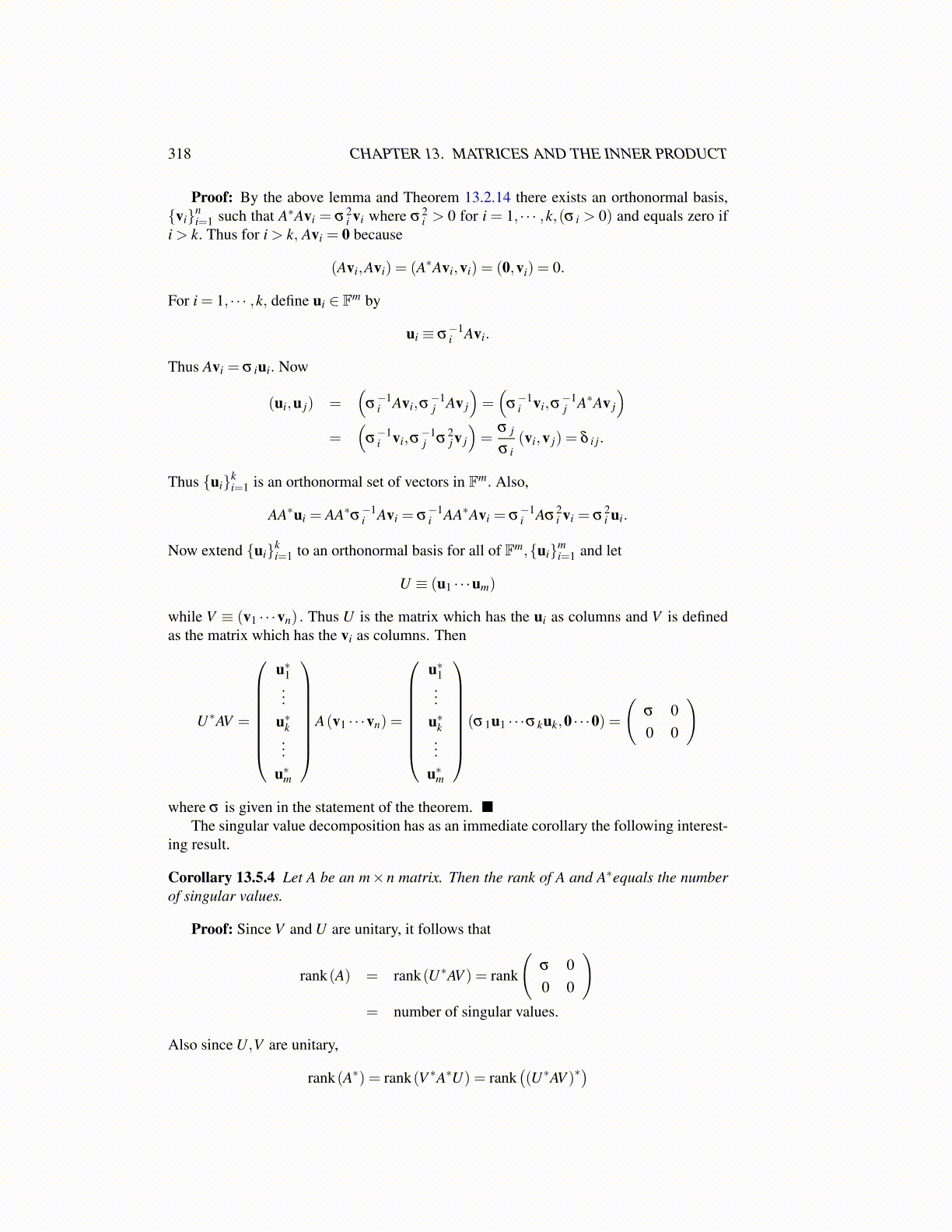
318 CHAPTER 13. MATRICES AND THE INNER PRODUCT
Proof: By the above lemma and Theorem 13.2.14 there exists an orthonormal basis,{vi}n
i=1 such that A∗Avi = σ2i vi where σ2
i > 0 for i = 1, · · · ,k,(σ i > 0) and equals zero ifi > k. Thus for i > k, Avi = 0 because
(Avi,Avi) = (A∗Avi,vi) = (0,vi) = 0.
For i = 1, · · · ,k, define ui ∈ Fm by
ui ≡ σ−1i Avi.
Thus Avi = σ iui. Now
(ui,u j) =(
σ−1i Avi,σ
−1j Av j
)=(
σ−1i vi,σ
−1j A∗Av j
)=
(σ−1i vi,σ
−1j σ
2jv j
)=
σ j
σ i(vi,v j) = δ i j.
Thus {ui}ki=1 is an orthonormal set of vectors in Fm. Also,
AA∗ui = AA∗σ−1i Avi = σ
−1i AA∗Avi = σ
−1i Aσ
2i vi = σ
2i ui.
Now extend {ui}ki=1 to an orthonormal basis for all of Fm,{ui}m
i=1 and let
U ≡ (u1 · · ·um)
while V ≡ (v1 · · ·vn) . Thus U is the matrix which has the ui as columns and V is definedas the matrix which has the vi as columns. Then
U∗AV =
u∗1...
u∗k...
u∗m
A(v1 · · ·vn) =
u∗1...
u∗k...
u∗m
(σ1u1 · · ·σ kuk,0 · · ·0) =
(σ 00 0
)
where σ is given in the statement of the theorem. ■The singular value decomposition has as an immediate corollary the following interest-
ing result.
Corollary 13.5.4 Let A be an m×n matrix. Then the rank of A and A∗equals the numberof singular values.
Proof: Since V and U are unitary, it follows that
rank(A) = rank(U∗AV ) = rank
(σ 00 0
)= number of singular values.
Also since U,V are unitary,
rank(A∗) = rank(V ∗A∗U) = rank((U∗AV )∗
)